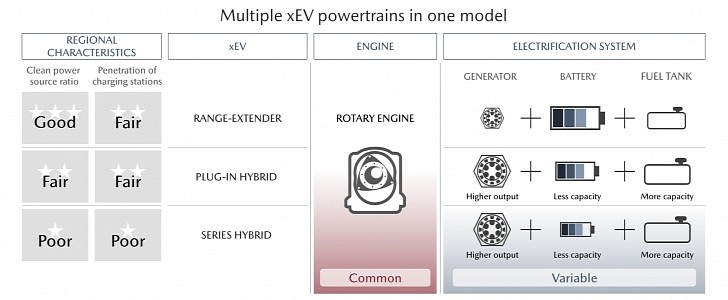There are only two ways to make a profit in the automotive industry: selling millions of affordable cars or thousands of more upscale ones. According to Sergio Marchionne, those following the first alternative needed to produce at least 6 million vehicles per year. In 2021, Mazda sold 1,287,548. It was obvious it would have to choose the second option to keep afloat, and an interview with Autocar confirms that.
The UK managing director Jeremy Thomson told the British magazine that Mazda wants to be a “Japanese premium.” Curiously, Thomson acknowledges that Lexus became premium but that it is just one-third of Mazda’s size. In other words, that could give the brand he manages room to grow.
Before Mazda can get there, it will have to define its own terms for “Japanese premium.” It would not be what Lexus already does. After all, Toyota’s luxury division started its career with a vehicle that was even aesthetically similar to a Mercedes-Benz – the LS 400 – but evolved to cars with more personality and the same reputation for reliability and refinement. Mazda does really well in the former and is trying to improve the latter.
By selling more premium vehicles, the Japanese carmaker can escape the need to increase sales volumes. In the past, that led it to rebadge Ford vehicles. Currently, it is doing so with the Toyota Yaris, sold in Europe as the Mazda 2. If the strategy works, it may ditch such products and do well with what it really has to offer.
Now that Mazda defined it will pursue more premium markets, its next challenge will be finding a way to embrace low or zero-emission vehicles without going bankrupt investing in electric cars. Its first attempt to do that did not work as planned: the MX-30 ended up being an ICE vehicle with a rather small battery pack. Mazda’s excuse was that it would be too heavy with a larger one. It forgot to mention that it would also be way more expensive.
Mazda’s attempts to go upmarket have already started to show, but new vehicles such as the CX-60 in Europe and CX-50 in the U.S. may give us a better idea of what the Japanese carmaker wants to be in the future. Hopefully, it will come up with a unique definition for Japanese premium soon enough not to waste time and resources in the process.
Before Mazda can get there, it will have to define its own terms for “Japanese premium.” It would not be what Lexus already does. After all, Toyota’s luxury division started its career with a vehicle that was even aesthetically similar to a Mercedes-Benz – the LS 400 – but evolved to cars with more personality and the same reputation for reliability and refinement. Mazda does really well in the former and is trying to improve the latter.
By selling more premium vehicles, the Japanese carmaker can escape the need to increase sales volumes. In the past, that led it to rebadge Ford vehicles. Currently, it is doing so with the Toyota Yaris, sold in Europe as the Mazda 2. If the strategy works, it may ditch such products and do well with what it really has to offer.
Now that Mazda defined it will pursue more premium markets, its next challenge will be finding a way to embrace low or zero-emission vehicles without going bankrupt investing in electric cars. Its first attempt to do that did not work as planned: the MX-30 ended up being an ICE vehicle with a rather small battery pack. Mazda’s excuse was that it would be too heavy with a larger one. It forgot to mention that it would also be way more expensive.
Mazda’s attempts to go upmarket have already started to show, but new vehicles such as the CX-60 in Europe and CX-50 in the U.S. may give us a better idea of what the Japanese carmaker wants to be in the future. Hopefully, it will come up with a unique definition for Japanese premium soon enough not to waste time and resources in the process.








